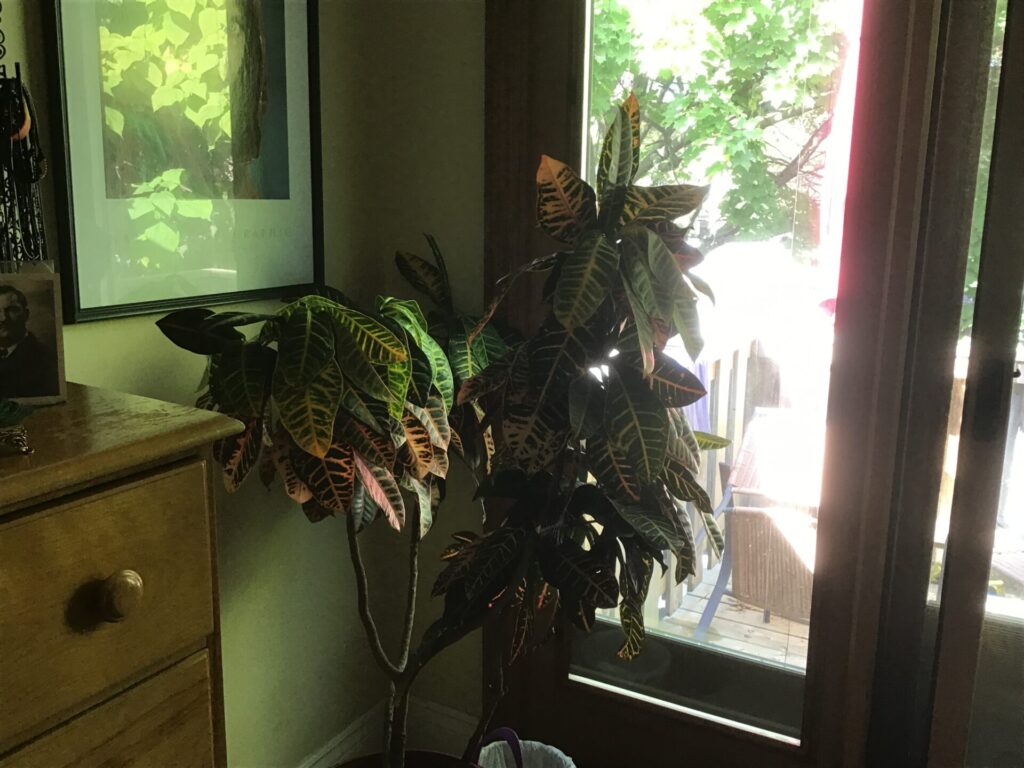
I live in Toronto and every summer I put my 25 year old, 5 feet tall croton on a porch where it thrives in 6 hours of sun. I usually spray it with soap and water, then rinse and bring it indoors. This year I rinsed the roots and the leaves in liquid hand soap and water, and repotted it in new potting soil which I sterilized in the oven. As you can see from the picture, its top leaves (the newest, tender ones) are wilting. I am very upset, as my mother gave this to me just before she died. Can you help?
Thank you for your question for Toronto Master Gardeners about your treasured croton.
Your croton’s good health over the years is a testament to your nurturing care: summer vacations outdoors, grooming and indoor care. You describe your method of repotting it: rinsing off the roots and leaves with liquid hand soap and water and repotting it in sterilized soil. The drooping tops would indicate transplant shock from which your plant may not recover as crotons are rather sensitive to disturbance whether it be repotting or changing light conditions and humidity.
It is assumed that rinsing the roots and leaves with liquid hand soap and water was to prevent overwintering insect infestation. Keeping the root ball intact is important for most houseplants although root pruning might be done only for a few hardier varieties. Soaps and household detergents contain, in addition to fatty acids and alkali, additives which are too harsh for cleansing plants, especially the roots and may be toxic to them. Even commercial insecticidal soaps are risky as many plants are sensitive to even the most gentle type of soap spray. It is important to carefully read labels for plant types, dilution and method of application including testing the plant for tolerance.
The type of repotting soil which you used was not indicated. While you would not want to disturb the roots further, crotons prefer a well-drained potting mix rich in humus. The following steps are suggested for your croton:
- place your croton in a bright window, out of direct sun.
- provide high humidity for your plant by setting it on a dish of wet pebbles and spraying with water twice daily.
- keep the soil lightly moist but not wet. Normally, crotons appreciate reduced watering from fall to late winter so care must be taken not to overwater it particularly in its stressed condition
- watch for signs of recovery. Do not fertilize until vigorous growth is evident.
- As an added measure (while taking cuttings in spring is recommended), in order to try to save some of your croton, you may have no option but to take cuttings now, even though your plant is entering a period of slower growth from fall into late winter.
Note: As the milky sap of the croton can be a skin irritant, it is advisable to wear gloves when working on your croton.
For further information on cuttings and croton care, please see the following:
https://www.torontomastergardeners.ca/askagardener/my-beautiful-deeply-loved-croton-plant/
Wishing you all success in helping your croton.

